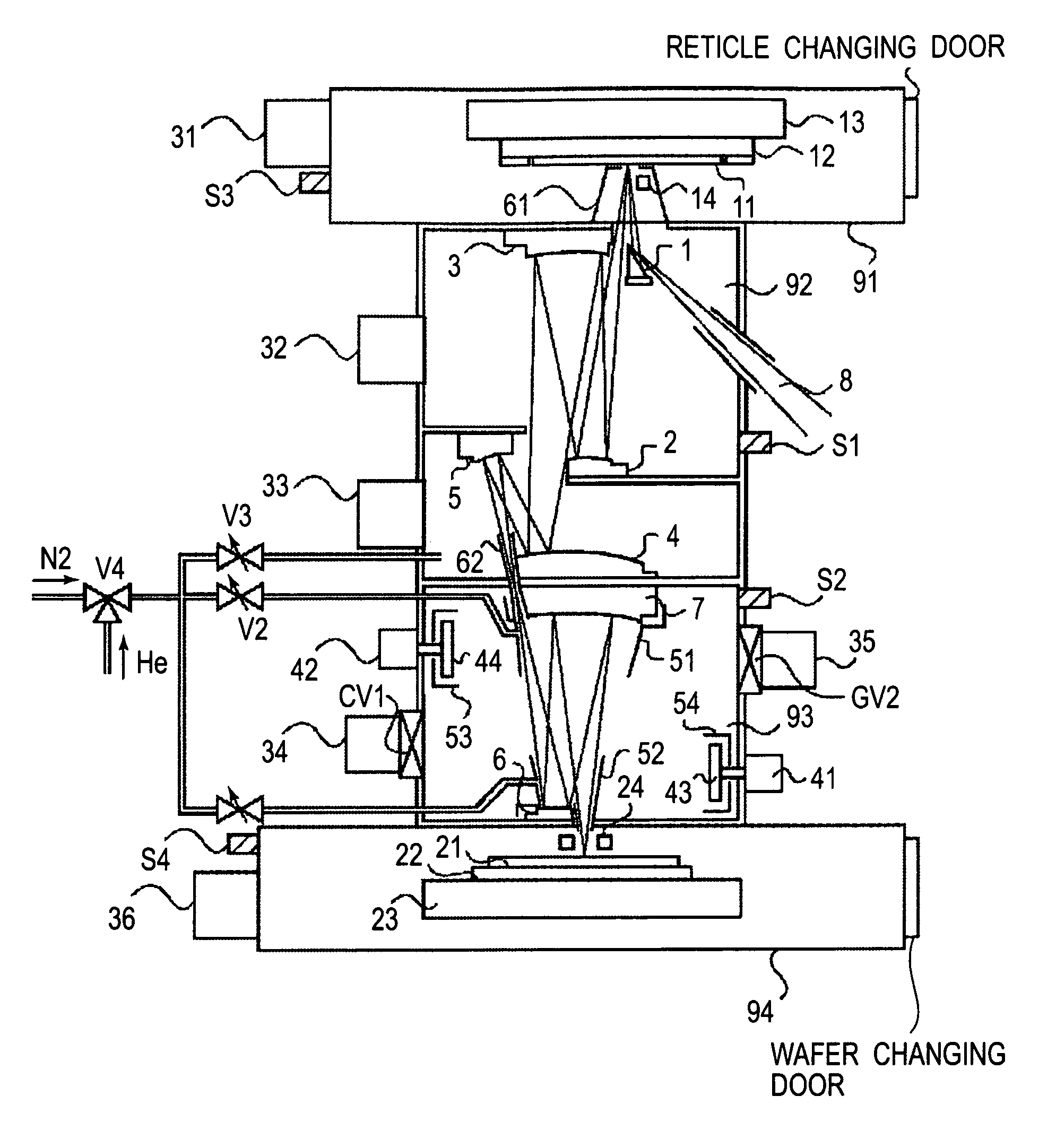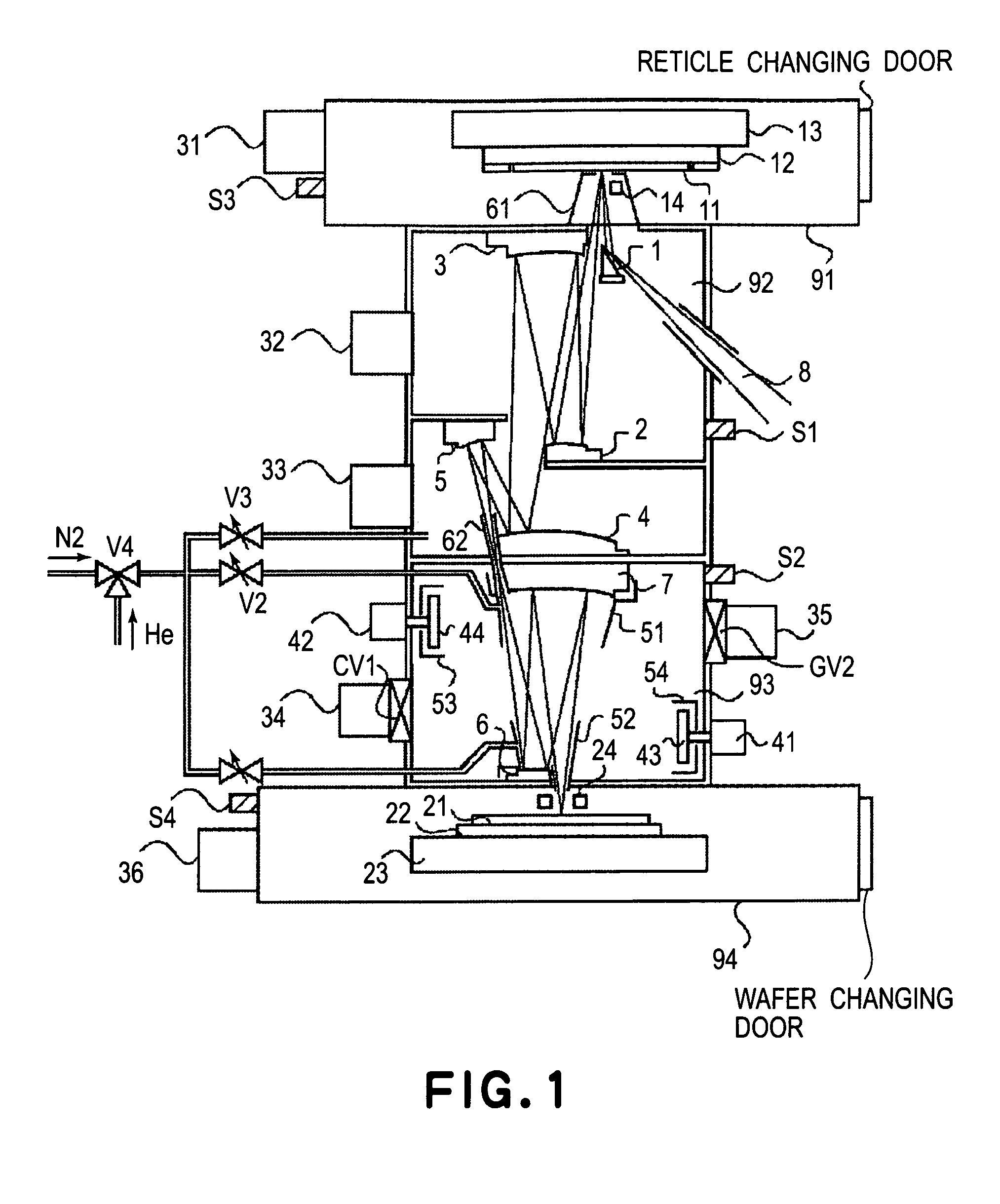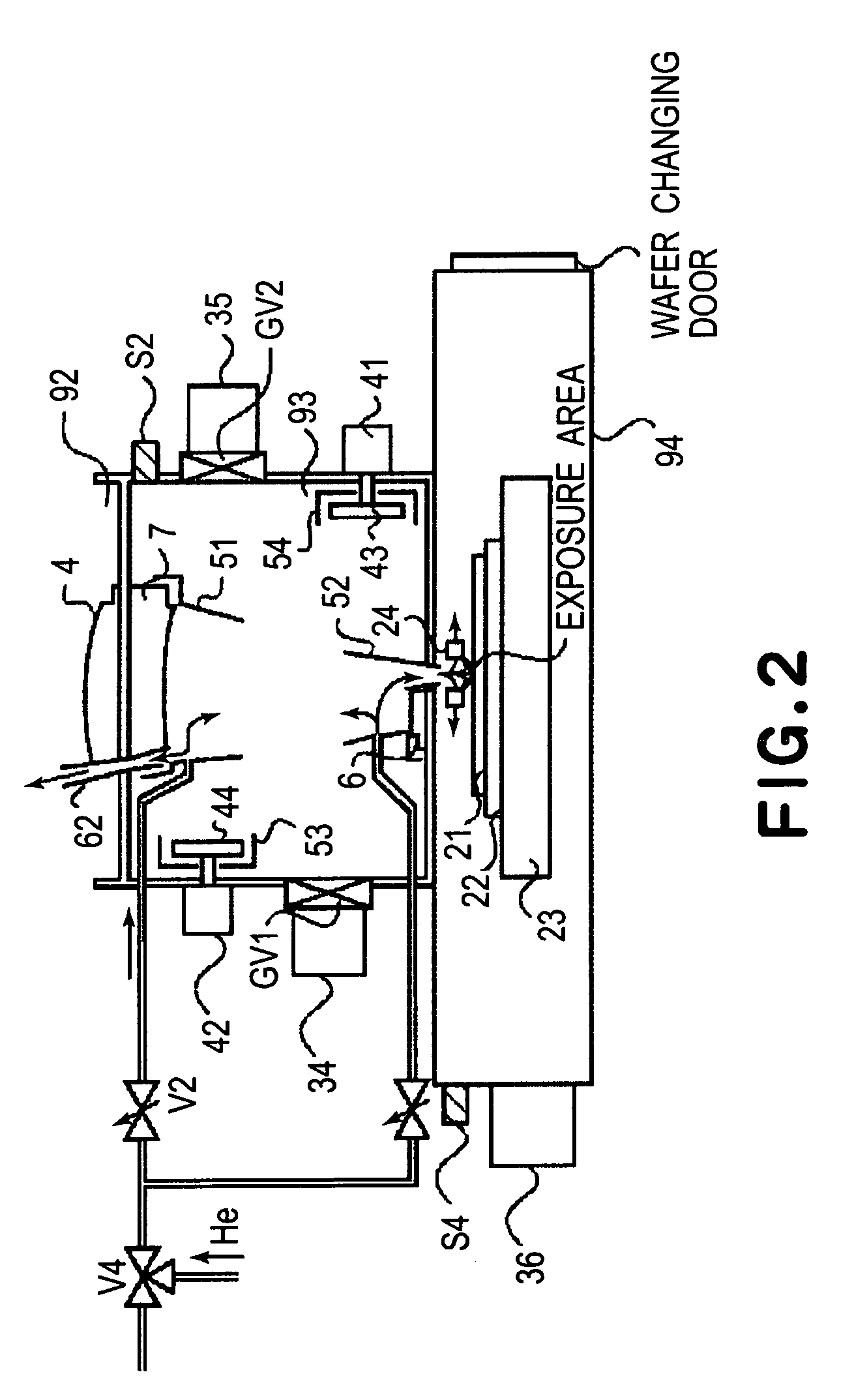Exposure apparatus, and device manufacturing method using the same
a technology of refraction and apparatus, applied in the field of exposition apparatus, can solve the problems of limiting the use of ultraviolet light in lithography, the limitation of the refraction of light in the visible light region or in the wavelength region of the lens system, and the rapid miniaturization of the semiconductor devi
- Summary
- Abstract
- Description
- Claims
- Application Information
AI Technical Summary
Benefits of technology
Problems solved by technology
Method used
Image
Examples
first embodiment
[0061]FIG. 1 is a side view schematically showing the structure of a lithographic system according to one preferred embodiment of the present invention.
[0062]In FIG. 1, denoted at 11 is a reflection type reticle, and denoted at 12 is a reticle holding device for holding the reticle 11. Denoted at 13 is a reticle stage for moving the reticle 11 as held by the reticle holding device. Denoted at 8 is extreme ultraviolet (EUV) light that is exposure light. Denoted at 1 is a reticle illuminating mirror, and denoted at 2-7 are first to sixth mirrors that constitute a projection optical system. Denoted at 14 is a reticle alignment optical system. Denoted at 21 is a wafer, and denoted at 22 is a wafer chuck for holding the wafer 21. Denoted at 23 is a wafer stage for moving the wafer 21 as held by the wafer chuck 22, and denoted at 24 is a wafer alignment optical system.
[0063]The EUV light source comprises a laser plasma light source, not shown. It has such structure that a pulse laser ligh...
second embodiment
[0099]FIG. 4 illustrates a structure according to a second embodiment of the present invention. FIG. 4 is an enlarged view of a portion around a fifth mirror 6 of the projection system. In this embodiment, a cryo-panel is disposed at a right-hand side of the fifth mirror 6 of the projection system, the cryo-panel having an opening for allowing passage of exposure light and having a radiation shield at its periphery. Like the first embodiment, gasses are supplied during the exposure process and during reactivation of the cryo-panel.
[0100]With the disposition of the cryo-panel 45 above the exposure area on the wafer surface, the path of contamination (contaminant substances) which might otherwise enter the light path space 93 due to scattering is deflected by the helium gas supplied through the valve V1. As a result, the probability that the contamination impinges on the cryo-panel 45 and is attracted (exhausted) thereby increases.
[0101]FIG. 5 illustrates this effect, being analyzed o...
third embodiment
[0113]Next, referring to FIGS. 9 and 10, an embodiment of a device manufacturing method which uses an exposure apparatus described above, will be explained.
[0114]FIG. 9 is a flow chart for explaining the procedure of manufacturing various microdevices such as semiconductor chips (e.g., ICs or LSIs), liquid crystal panels, or CCDs, for example. Step 1 is a design process for designing a circuit of a semiconductor device. Step 2 is a process for making a mask on the basis of the circuit pattern design. Step 3 is a process for preparing a wafer by using a material such as silicon. Step 4 is a wafer process which is called a pre-process wherein, by using the thus prepared mask and wafer, a circuit is formed on the wafer in practice, in accordance with lithography. Step 5 subsequent to this is an assembling step which is called a post-process wherein the wafer having been processed at step 4 is formed into semiconductor chips. This step includes an assembling (dicing and bonding) process...
PUM
| Property | Measurement | Unit |
|---|---|---|
| temperature | aaaaa | aaaaa |
| wavelength | aaaaa | aaaaa |
| wavelength | aaaaa | aaaaa |
Abstract
Description
Claims
Application Information
 Login to View More
Login to View More - R&D
- Intellectual Property
- Life Sciences
- Materials
- Tech Scout
- Unparalleled Data Quality
- Higher Quality Content
- 60% Fewer Hallucinations
Browse by: Latest US Patents, China's latest patents, Technical Efficacy Thesaurus, Application Domain, Technology Topic, Popular Technical Reports.
© 2025 PatSnap. All rights reserved.Legal|Privacy policy|Modern Slavery Act Transparency Statement|Sitemap|About US| Contact US: help@patsnap.com



